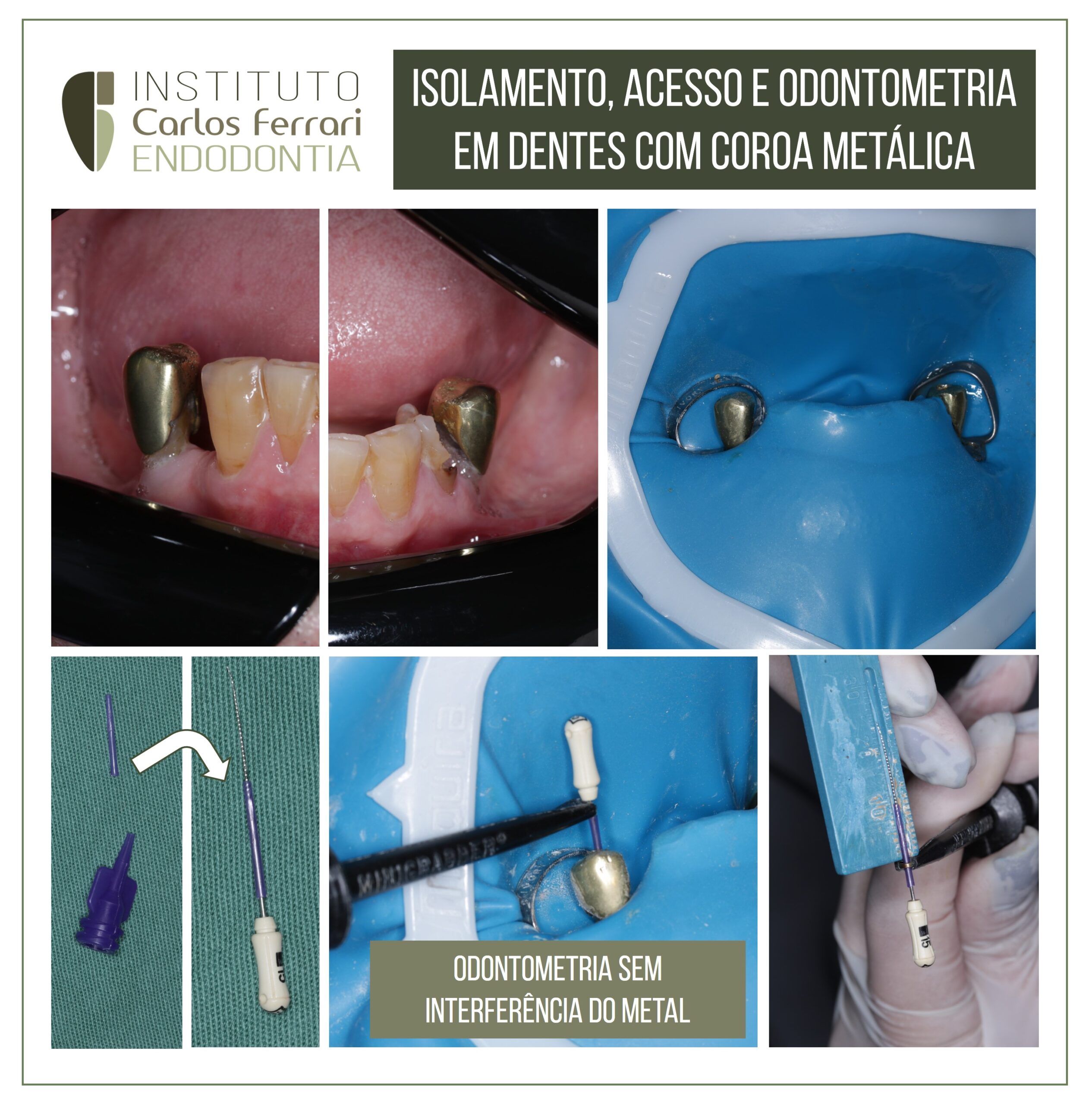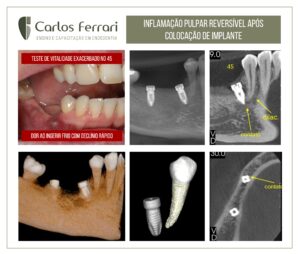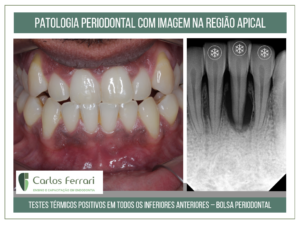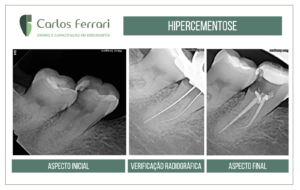Endodontics in prosthetic crowns. Adaptation for odontometry.
Referral from the prosthodontist for endodontic treatment of teeth 35 and 45 with a metal crown. Isolation and access were carried out without removing the crown.
Odontometry was not possible at first because of the contact between the metal and the file. The file was then isolated with a piece of irrigation tip, which made odontometry possible on both teeth.
Case performed by student Joice Gandini from the endodontics specialization course at APCD Bragança Pta.
In: Allgayer & Vani. Intraradicular core removal followed by endodontic retreatment: 13-year follow-up. RSBO Revista Sul-Brasileira de Odontologia 8.1 (2011): 108-113.
Introduction
In today's endodontic practice, the science of diagnosis is the fundamental basis for therapeutic institution and the consequent indication of treatment. The clinical diagnosis of pulp and periapical pathological alterations based on knowledge, experience, semiological and radiographic data and, above all, the professional's clinical sense, will enable effective planning of the procedure and, consequently, a very favorable prognosis.
Endodontic failure is usually due to technical and pathological factors or influenced by systemic factors. The prevention of future complications arising from the maintenance of unsatisfactory endodontic treatment in a tooth that will be fitted with a fixed prosthesis with an intraradicular post,
imposes the immediate indication of root canal clearance and justifies the need for
retreatment. Strictly speaking, every tooth, pulped or not, has its importance in the stomatognathic system. In many cases, the tooth is so valuable that removing it would make certain conditions and solutions even more complicated.
Endodontics in prosthetic crowns. Adaptation for odontometry.





